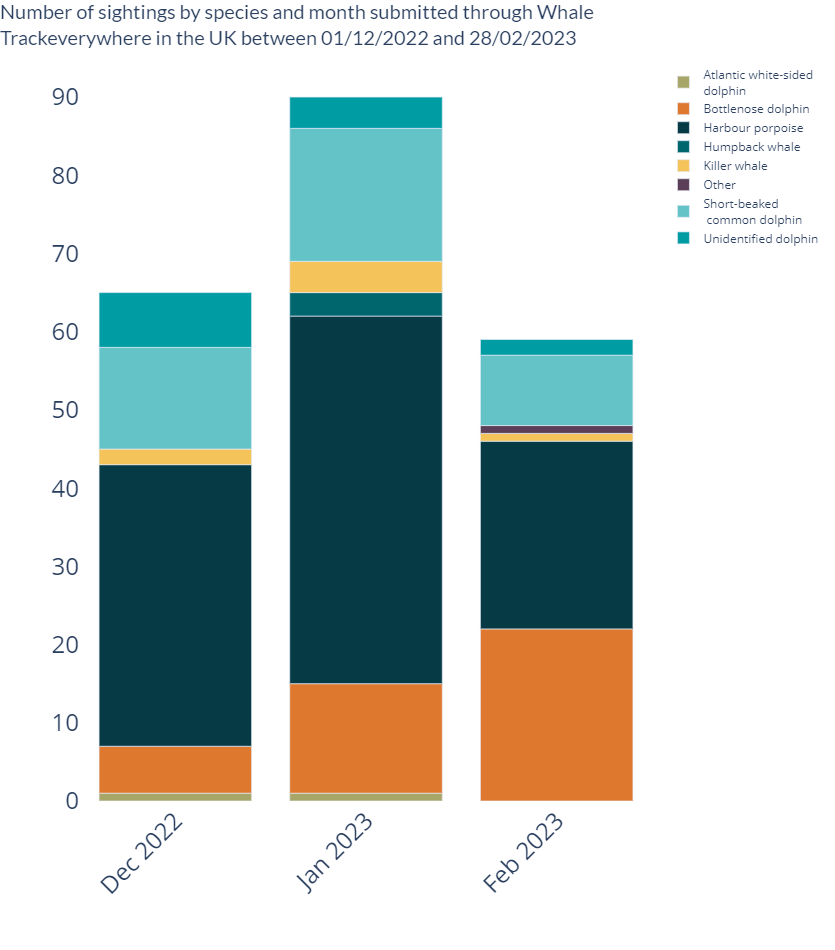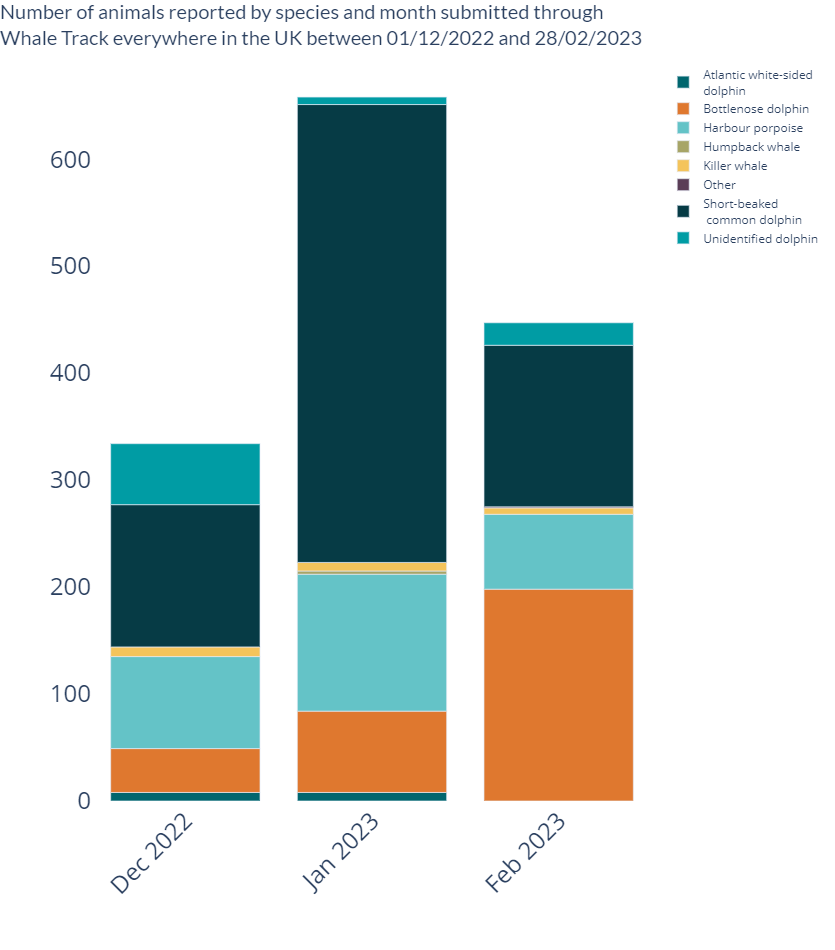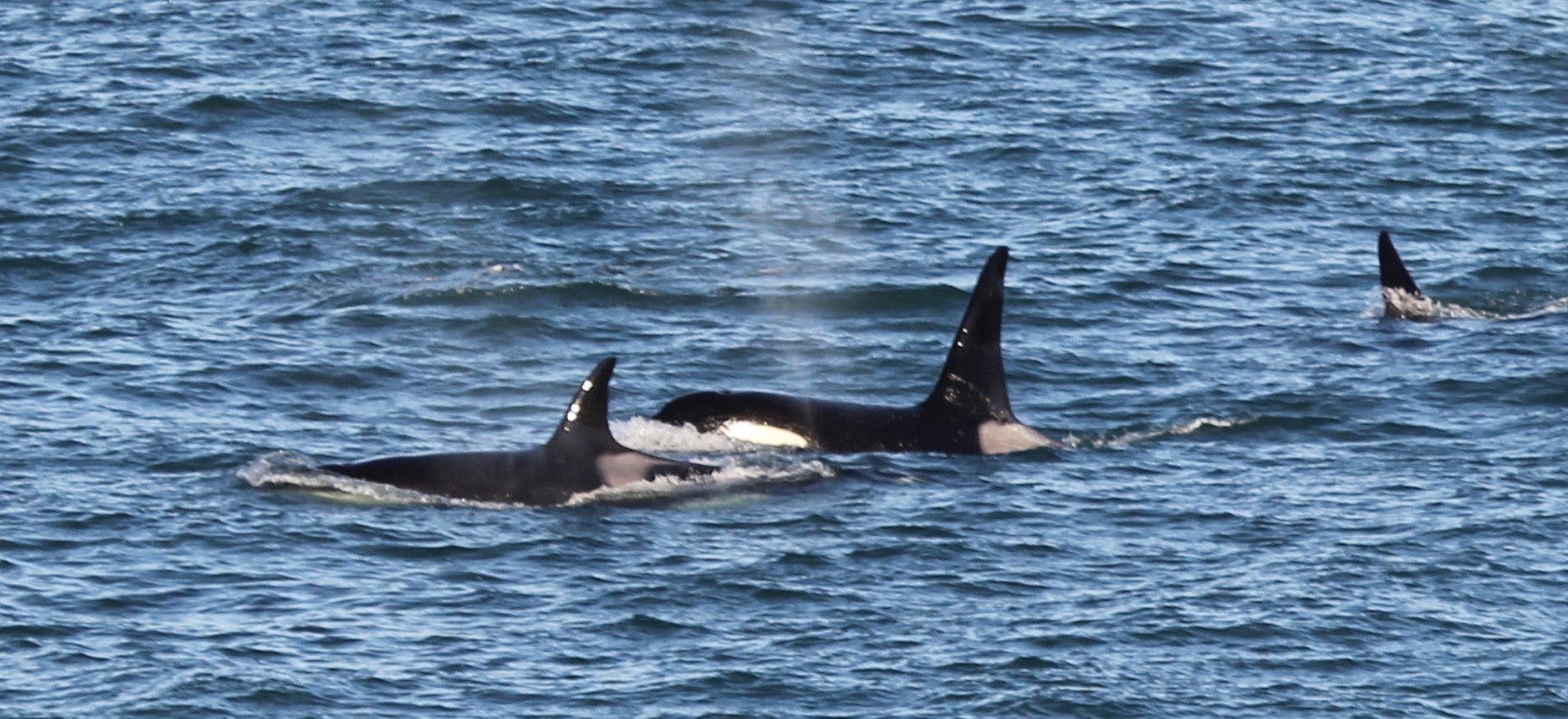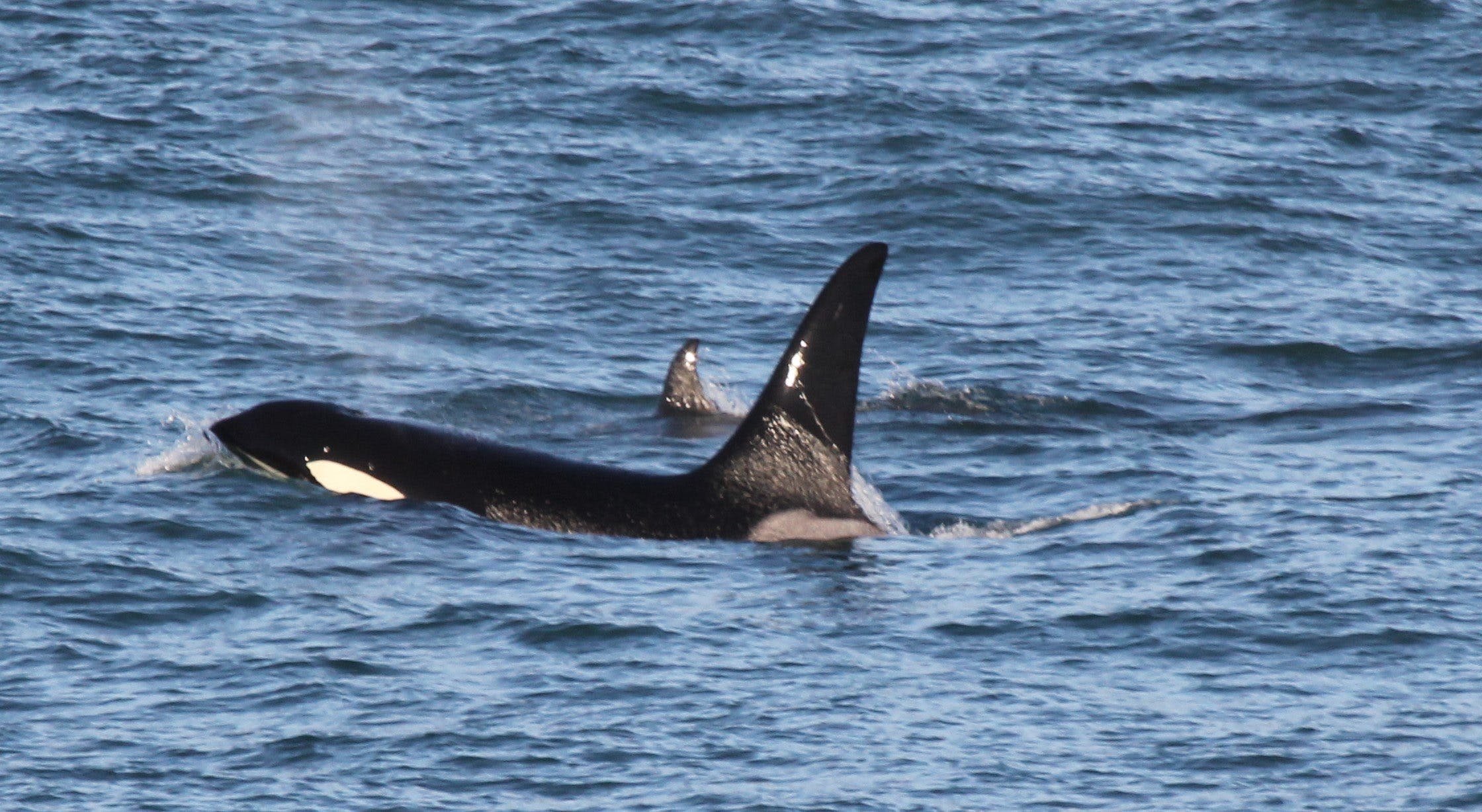Winter Wanderers: Whale Track Sightings Summary
We are very thankful to all the reporters who sent in their sightings this winter, with almost double the number of people reporting sightings compared to winter 2022.
Although winter is usually a quieter time for sightings of whales and dolphins, to understand more about the presence and absence of cetaceans in our waters year-round, it is an important time of year to continue sending in reports.
Although there have been less excursions recorded this winter, our amazing Whale Track community have braved the crisp winter conditions to conduct watches from land, along with reporting their casual sightings from land and sea. With a total of 214 sighting reports of 1439 animals from 6 different species.
Since I started writing these sightings summary reports last year, for the first time our most sighted species podium has a new species. Our much-loved harbour porpoise continues to take the top spot with 50% of sightings reported (107 sightings of 284 animals). However, we have a new runner up... the bottlenose dolphin has pipped the common dolphin to second place (42 sightings of 315 animals), while common dolphins remain close behind in third place (39 sightings of 712 animals).
*This data has not been analysed or corrected for effort.
harbour porpoise
We’re starting off with the often-underrated harbour porpoise. The most frequently sighted species in Scotland, the wee harbour porpoise is our smallest cetacean, growing up to just 1.9m in size. Though small, they have a big appetite - feeding on up to 550 fish every hour!
The harbour porpoise is usually a shy species, often best watched from a distance if on a boat. However, they can sometimes surprise us by approaching idle vessels, as has been seen in previous reports from Graeme Brown and Graham McKirky, who both had very curious harbour porpoise around their stationary boats last year. Watch our Sightings Celebration Talk for more details.
This winter, whilst out paddleboarding around Calve Island off Tobermory, regular Whale Track reporter, Sharyn, and I had a close encounter with one lone harbour porpoise who appeared to be foraging. With beautifully calm seas and low wind, the harbour porpoise was spotted about 60 meters away when it disappeared and reappeared with an audible puff as it broke the surface closer to us - demonstrating why it has the nickname ‘puffing pig’.
Harbour porpoise © Sharyn Murray
Spending time on the water, whether it be on a motorboat or paddle craft, is a great time to watch out for whales and dolphins and if safe to do so, report your sighting to us.
For your safety, always have a fully charged phone on your person in a waterproof case if on a paddle craft.
Find out more about the wee harbour porpoise in our recent kids blog https://hwdt.org/news/puffingpigs
Bottlenose dolphins
Bottlenose dolphins © Elaine
Since Whale Track range was increase to Scotland-wide, bottlenose dolphins have been a more regularly reported species. In Scotland, there are two resident populations of bottlenose dolphins on the west coast: one around Barra (approx. 15 individuals) and another in the Inner Hebrides (approx. 40 individuals), and one resident population on the east coast (over 200 individuals). So, it is understandable we are receiving more reports of this species since the upgrade of the app.
The Clyde has seen a small pod of bottlenose dolphins spending time in the area in recent years. With the creation of the Clyde Whale and Dolphin Watch encouraging more people to report their sightings through Whale Track, we’re excited to learn more about this pod of dolphins. Through citizen science and Photo ID, individuals in the Clyde have been identified as members of the east coast population.
Keep a look out for the publication of our west coast bottlenose dolphin photo ID catalogue coming soon!
killer whales
Local killer whale celebrities, John Coe and Aquarius, were spotted for the first time off the Caithness coast - the first documented report of the pair in this location. Although the boys have been seen off the coast of Aberdeen - so it stands to reason they may have travelled around the north east coast in the past - this is the first ever confirmed sighting of the duo recorded in that area.
Initially reported off Lybster, through social media by Colin Bird, and subsequently through Whale Track by several reporters, the pair soon attracted dedicated watchers, for their chance at seeing these enigmatic killer whales. Gordie Bryce and Karen Munro both report the pair travelling east along the Caithness coast, being last seen from Duncansby Head, heading towards Stroma Lighthouse on the 05 January.
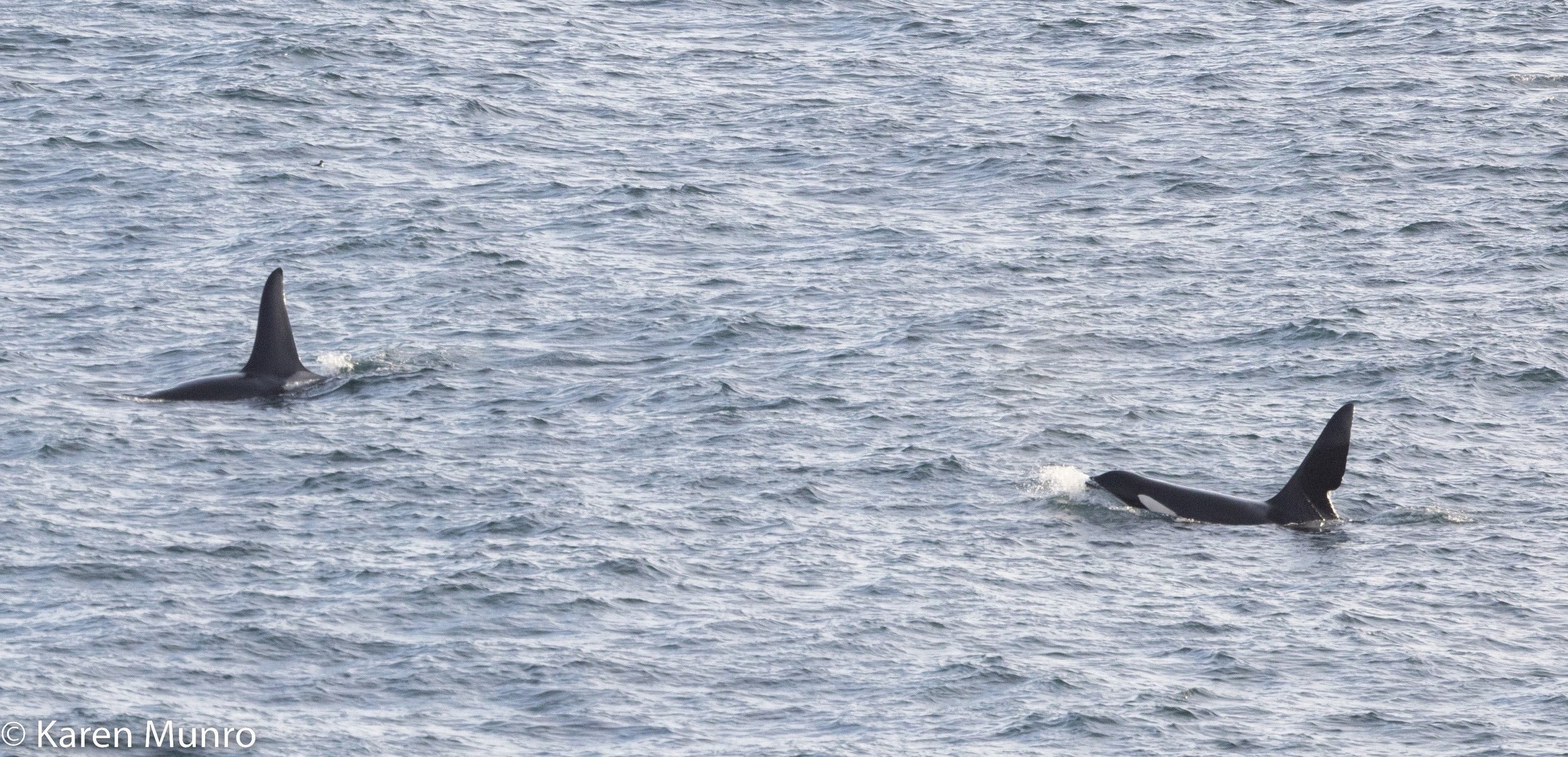
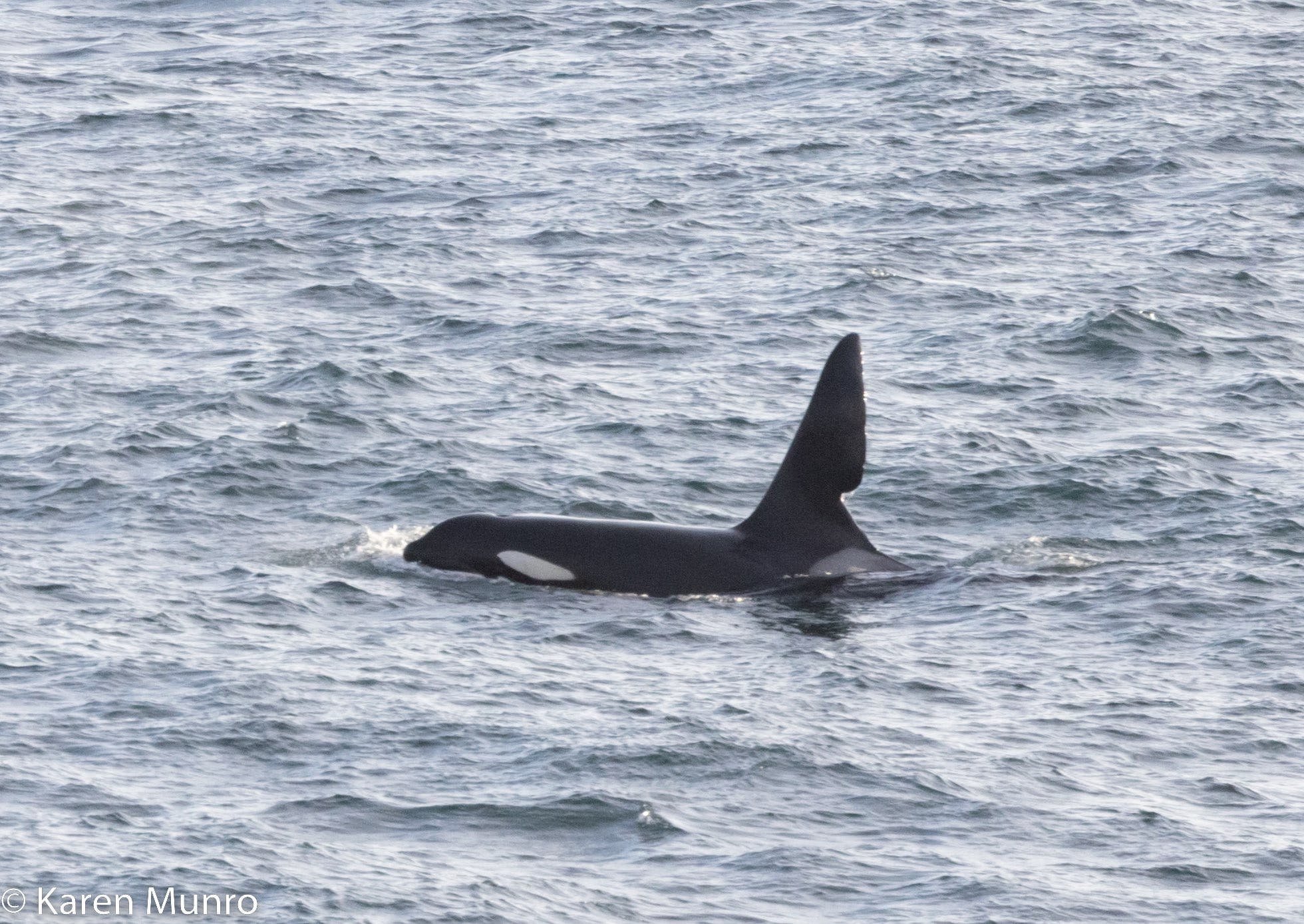
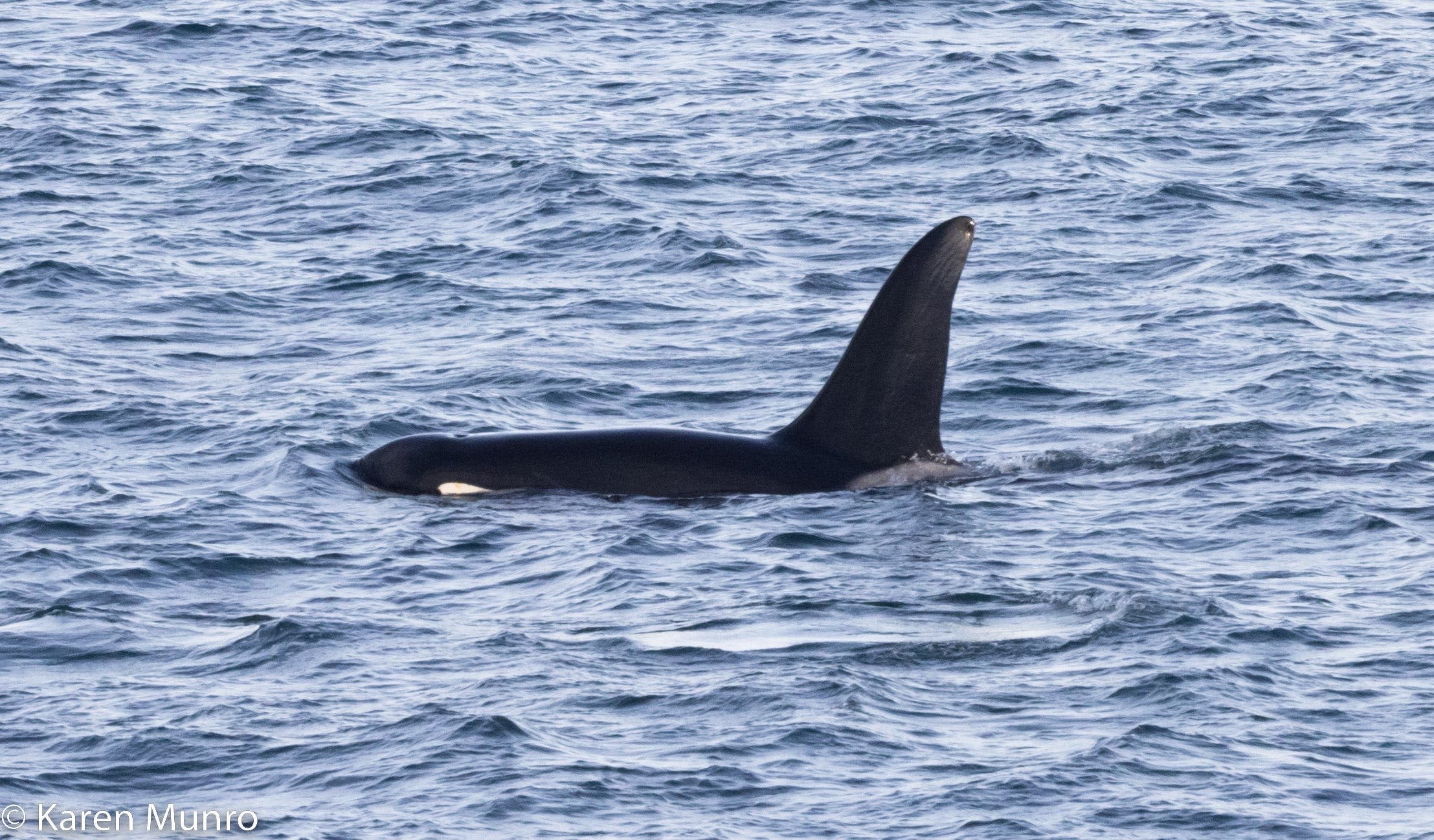
Since, there have been reports of a big bull killer whale around the Pooltiel Fish Farm, Skye, on 21 January, which was suspected, but unconfirmed, as being John Coe.
Where will the pair turn up next? Let us know if you spot them, by reporting your sighting through Whale Track.
It’s not just been the West Coast Community that have been spotted this winter. We have also had reports of 4 killer whales in Orkney, 5 killer whales off the north coast of Scotland and this pod of 6 killer whales around the Isle of Lewis by Sue Envill, that one of our new verification volunteers, Gordie, believes could be the 12s pod.
Killer whales © Sue Envill
OTHER SPECIES
It’s getting more common that unusual species are sighted in the waters around the UK, with reports of northern bottlenose whales, belugas and walruses being just a few that come to mind in recent years. Whether these sightings are anomalies or a trend is something only long term monitoring can help answer.
Walrus, in recent years, have started to become a species that show up off the coast of the UK, enthralling onlookers, whilst also invoking a question that has everyone scratching their heads for the answer, ‘why are they here?’
Walrus © Lorn MacRae
This question once again came up when a walrus was sighted of Cairn Na Burgh Beag, an island that forms part of the Treshnish Isles off the NW coast of Mull, at the end of February this year. Spotted by local creel fisherman, Lorn Macrae, the walrus appeared to be basking in the winter sun, sparking excitement from locals and the wider public.
Although there are many theories to answer the ‘why are they here’ question, more research is needed to truly discover why these animals are appearing off our coasts. We encourage anyone who happens across the animal to report it to us (while keeping a safe distance from the animal to minimise any disturbance) so we can help monitor its movements and health. The British Divers Marine Life Rescue were informed of its presence and kept up to date. Find out more about this unusual sighting here.
Thank you to all the hardy Whale Track observers who kept watching out during the winter months. You reports can provide really useful information on different species - helping document what creatures are present through-out the year.

